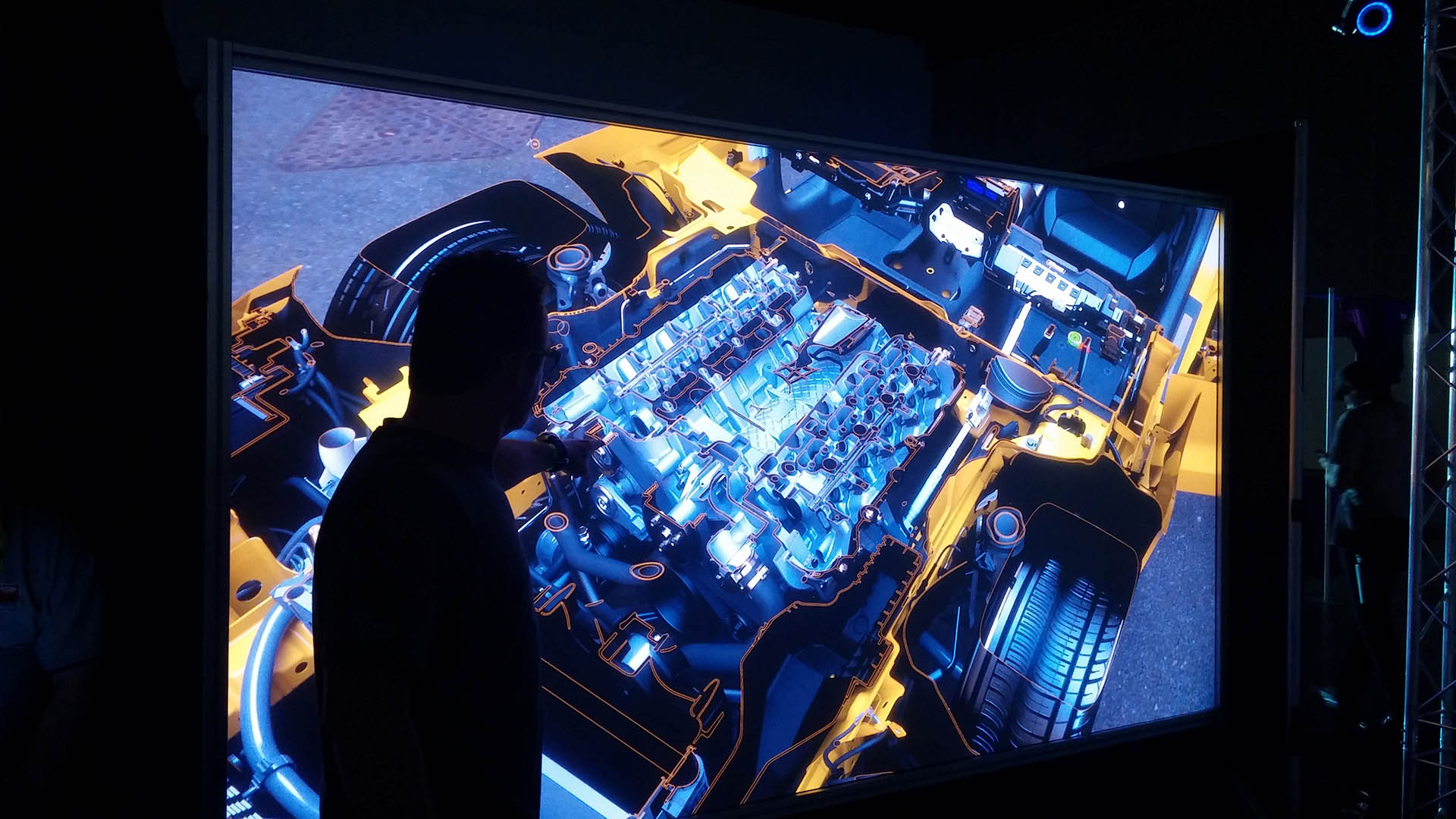

One of the major goals of automakers is to prioritize time to market. Executives look for every possible tool and resource that can help their company reduce the design and engineering time of their latest automobiles.
For many years designers, engineers and managers used Computer-Aided Design (CAD) models as a means of viewing, communicating and collaborating on automotive engineering and design. This process was very slow and cumbersome due to the large amount of complex data, and limited computer graphics capability at the time. In the early 1990's, computer graphics and software increased in performance allowing, for the first time, complex CAD data to be simplified and viewed in almost real-time.
The steady progression from the early 1990's to today has seen computer graphics hardware and software performance increase to the point that Virtual reality and visualization has become a vital tool to in validating, communicating and optimizing automotive design and engineering. Virtual Reality now provides the ability to, in real-time, navigate through a virtual vehicle, manipulate components just as in the real world and even change between engineering iterations.
Viewing a virtual version of a vehicle allows designers and engineers to better understand complex details and identify flaws before these designs are released for production. This is especially important in the modern automotive industry, where Original Equipment Manufacturers (OEM) use designs and parts from many external suppliers. Any tool that helps the automotive industry identify and solve issues prior to production will ultimately provide savings and decreased time to market.
Today's Virtual Reality tools must be extremely intuitive, comfortable and operate with no lag in performance at all. If these prerequisites are not met, the tools will not be utilized.
Engineering and design teams use virtual reality to identify problems such as interferences, body gap inconsistencies, interior ergonomics validation among other aspects. The ability for teams to come together and view specific areas of the vehicle in real-time provides a very efficient collaboration. These teams can also be located in various parts of the globe.
When it comes to interferences, an engineering team might use virtual reality to look at whether they can run a wiring harness through a car seat and still get it where it needs to go, or examine if parts can be combined and meet the right tolerance levels.
On the user experience side, teams utilize virtual reality to simulate driving. A few questions they might seek to answer include:
The rise in popularity of consumer-grade head-mounted displays (HMDs) has driven renewed industrial interest in virtual reality. Many automakers leverage virtual reality in the form of cave automatic virtual environments (CAVEs). These environments can be utilized on their own or in coordination with PowerWalls and HMDs.
CAVEs are multi-sided, virtual reality environments where single or multiple users are immersed in a real-time, rendered 3D environment. The unique advantage of using a CAVE system is the complete sense of immersion and accurate scale that makes the user feel like they are working with the actual model being evaluated. In automotive design and engineering, CAVEs streamline go-to-market capabilities for companies looking to perfect their product before incurring the costs of tooling and prototypes.
CAVEs are particularly valuable as driving simulators. Engineers and designers also use CAVEs in conjunction with HMDs to simulate walking around the outside of a vehicle and experiencing user ergonomics issues, like how doors open.
Adding virtual reality to the design and engineering processes can significantly speed up time to market. Virtual reality is also leveraged with great success in the aerospace industry, where major manufacturers use it for both commercial and military applications.
IGI is an industry leader in the integration of virtual reality and other advanced visualization systems. We work with automakers, aerospace companies, the military, and other industries to achieve each organization’s unique goals.
Download our latest e-book, See Beyond, to learn more about how organizations leverage virtual reality to enhance the advanced visualization experience.